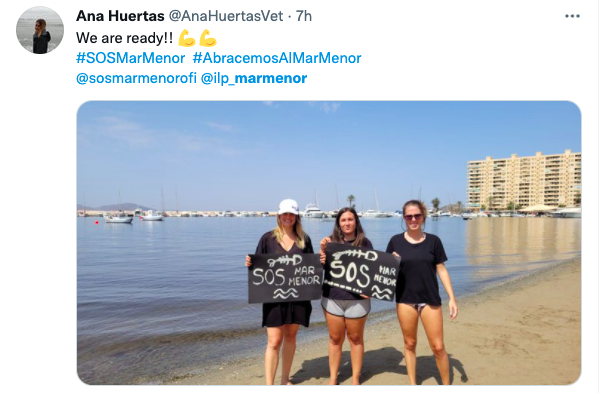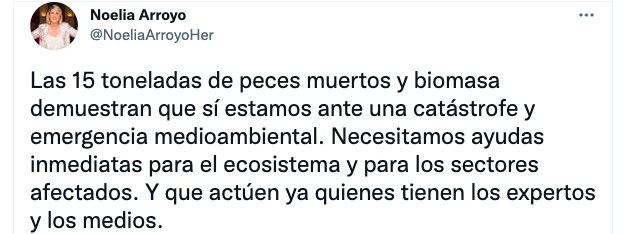One of Europe’s largest saltwater lagoons, the Mar Menor has long been a draw for tourists but is slowly dying as a result of agricultural pollution, with millions of fish and crustaceans dying over the past fortnight.
Images of dead fish have traumatised this southeastern coastal region, with locals and tourists turning out to join the mass mourning.
Footage from the scene showed huge lines of people, many in beachwear, holding hands along the waterfront on Alcazares beach, which stretches six kilometres and other part of the lagoon’s 73-kilometre (45-mile) shoreline.
Cartagena resident Juanjo Angosto tweeted the below video of the crowds on the beach.
Esto es impresionante. El Mar Menor es de la gente. #SOSMarMenor #AbracemosAlMarMenor pic.twitter.com/oVqLUgRSeC
— Juanjo Angosto (@Jjangosto) August 28, 2021
“It was an act of mourning for the death of the animals… we wanted people to somehow ask their forgiveness for the barbarity we’ve inflicted on them,” Jesus Cutillas, one of the organisers told AFP.
“For days, we’ve witnessed the death of millions and millions of fish and seeing all that unnecessary death hurts.
“The aim was to express our regret for what has happened and show our determination that it never happens again.”
Many people wore black, others held up banners reading: SOS Mar Menor.

Organisers estimated up to 70,000 people joined the protest.
15 tonnes of fish, algae
Experts say the fish suffocated due to a lack of oxygen caused by hundreds of tonnes of nitrates from fertilisers leaking into the waters, causing a phenomenon known as eutrophication which collapses aquatic ecosystems.
On Monday, regional officials said they had removed 4.5-5.0 tonnes of fish, but by Saturday that had risen threefold to 15 tonnes of fish and algae.
“The 15 tonnes of dead fish and biomass (removed from the shore) show that this is indeed an environmental catastrophe and emergency. We need immediate help for the ecosystem,” tweeted Noelia Arroyo, mayor of the nearby town of Cartagena.

Pedro Garcia, director of regional conservation organisation ANSE, said this week that environmental groups feared the marine death toll was more than twice the figure given on Monday by the authorities.
“Within that 15-tonne figure, there will certainly be at least two or three tones of dead vegetation, but we have no way of knowing for sure,” he told AFP on Saturday.
At the lagoon on Wednesday, Environment Minister Teresa Ribera accused the regional government of turning a blind eye to farming irregularities in the Campo de Cartagena, a vast area of intensive agriculture that has grown tenfold over the past 40 years.
But agricultural groups insist they comply scrupulously with environmental legislation.



 Please whitelist us to continue reading.
Please whitelist us to continue reading.
Member comments